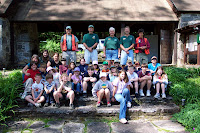Teachers: Funding Available for School Field Trips!

Are you interested in taking a group of students on a field trip this year, but funding is tight? You should apply for a field trip grant from Target: Are you wondering where you can take students for an interesting, interactive, and dynamic field trip? Look no further than Vermont State Parks ! Field trips are available on all sorts of topics from Native American studies to tree identification (and more)! Fall field trips are available at: Jamaica State Park , in Jamaica, Vermont Button Bay State Park , in Vergennes, Vermont Little River State Park , in Waterbury, Vermont Groton State Forest , in Groton, Vermont Contact Rebecca Phelps for additional information about these field trip opportunities at the contact information below. Rebecca Phelps Conservation Education Coordinator VT Dept of Forests, Parks & Recreation 103 South Main St, 10 South Waterbury, VT 05671 802.241.3651 rebecca.phelps@state.vt.us





